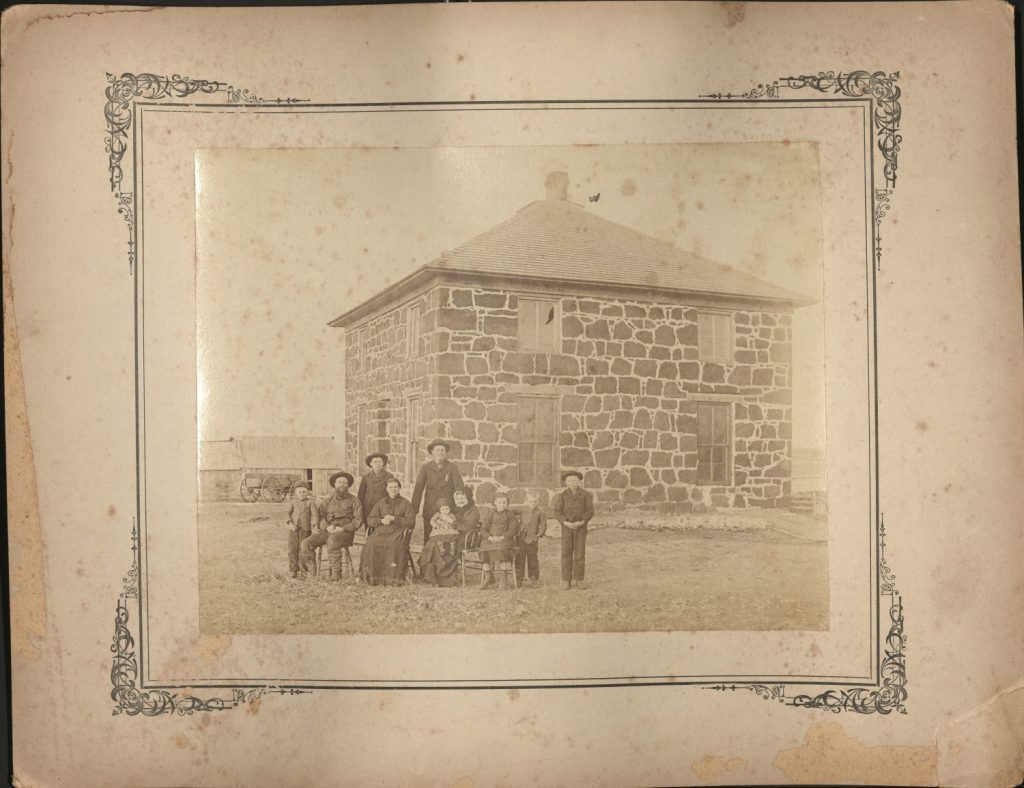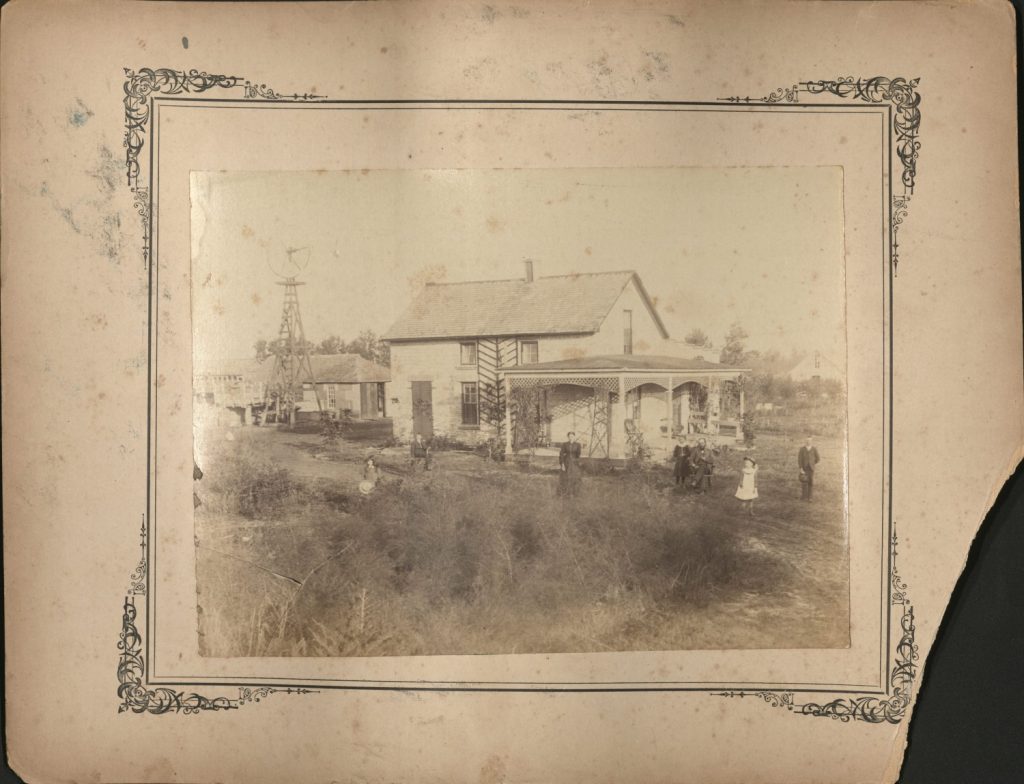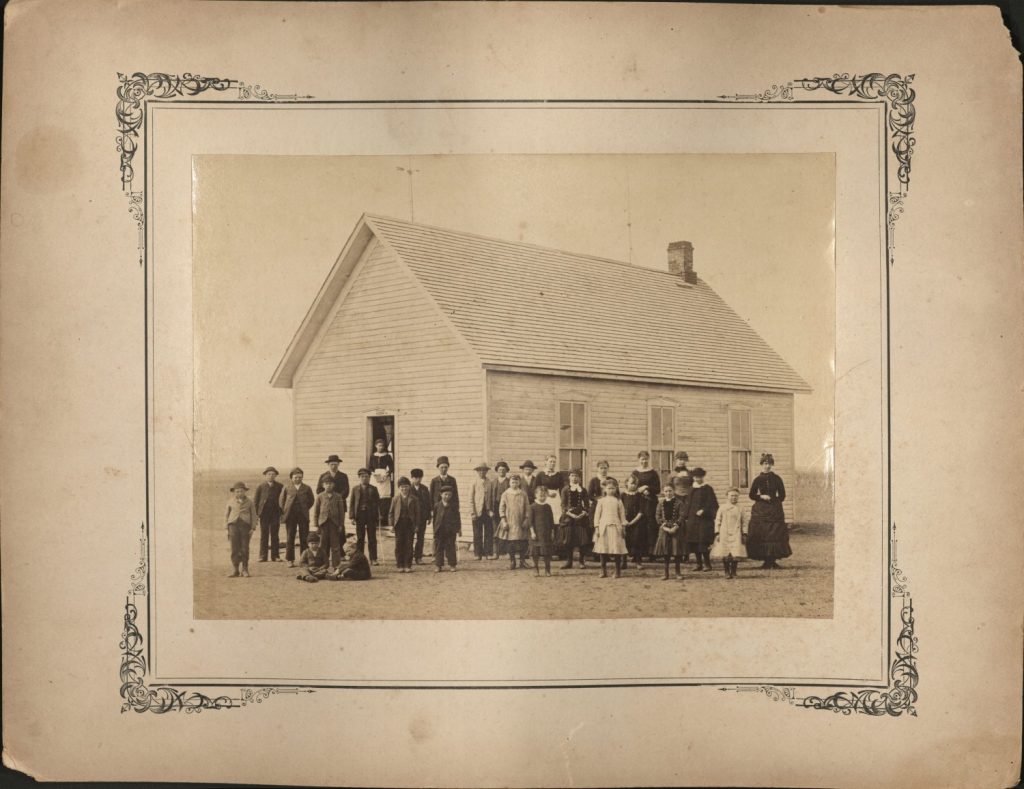That’s Distinctive!: Kansas Homesteaders
February 2nd, 2024Check the blog each Friday for a new “That’s Distinctive!” post. I created the series because I genuinely believe there is something in our collections for everyone, whether you’re writing a paper or just want to have a look. “That’s Distinctive!” will provide a more lighthearted glimpse into the diverse and unique materials at Spencer – including items that many people may not realize the library holds. If you have suggested topics for a future item feature or questions about the collections, feel free to leave a comment at the bottom of this page.
This week on That’s Distinctive! I am sharing a glimpse into the lives of early pioneer homesteaders in Kansas. Coming from the R.H. Gandivan and R. Hugobook collection are photos (1883-1884) of early pioneers in front of their homes in Kansas. The collection consists of 24 photos from around the state. According to the finding aid, “the photographs depict pioneer families and their homesteads in the following Kansas counties: Clay, Jewell, McPherson, Mitchell, Ottawa, and Saline. Subjects include early pioneer houses and farmsteads, family groups, landscapes, and individual portraits.”
An entry in the Kansas Historical Society’s Kansapedia notes that “after the Civil War and before 1890 the population of Kansas increased by the greatest amount in its history. More than one million people streamed into Kansas seeking a new life on the frontier…Free and cheap land provided by the Homestead Act and the railroads attracted many settlers.” The Homestead Act was passed in 1862. Under its provisions, “settlers could claim 160 acres of public land. They paid a small filing fee and then had two options for getting title to the land…The Homestead Act led to the distribution of 80 million acres of public land by 1900.”
Houses in the late nineteenth century came in many shapes and sizes. The Old House Archives provide an idea of just how vast the design range was (though many have been updated as time goes on). Architectural Observer provides a brief glimpse into an empty late nineteenth century farmhouse.




If you would like a glimpse into the life of a Kansan in the late 1800s, check out our earlier post featuring a Kansas farmer’s diary from 1896 or this post about letters and diaries of Kansas women in the 1860s. The library also houses the diary of Maude Egbert (a Kansas farm wife during the 1940s) and many others from throughout history.
Tiffany McIntosh
Public Services


